Andrew Birkbeck
Reviews By Author
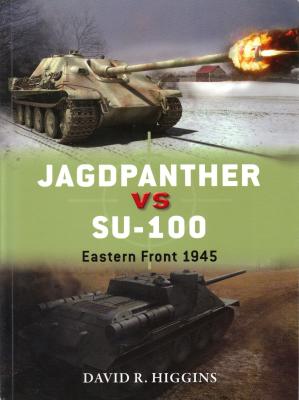
|
Jagdpanther vs SU-100 Eastern FrontPublished:
Both German and Soviet military theorists in the years leading up to WW2 incorporated tanks into their battle plans to exploit breakthroughs in the enemy’s lines. These tanks incorporated turrets capable of rotating 360 degrees, thus making them expensive and time consuming to produce and maintain. Little thought on either side was put into providing the slower moving foot soldiers with self propelled artillery or anti tank capabilities. The Germans were the first to see the utility of providing their troops with SPGs, with the introduction of the Sturmgeschutz (StuG) and Sturmartillerie, self propelled tracked vehicles with limited traverse guns protruding out the front end of the vehicle, and capable of knocking out enemy hard points and limited anti tank duties. Such vehicles were… more |
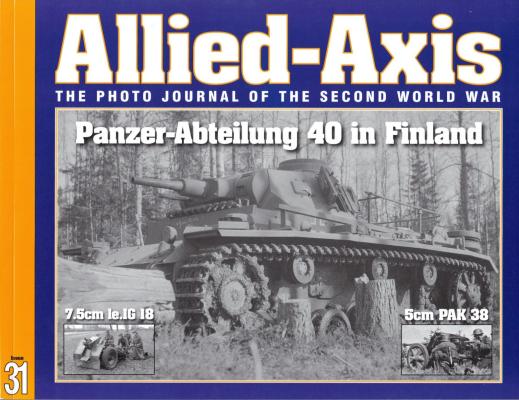
|
Allied-Axis: The Photo Journal of the Second World WarPublished:
For those readers not familiar with this series of publications, they are published by Ampersand Publishing, the firm responsible for the excellent Military Models in Review (MMiR) armor modeling magazine edited by Pat Stansell, one of my favorite magazines. As the title suggests, each issue of Allied-Axis contains a number of photo journal articles covering various aspects of the Second World War. The issue under review today contains three separate articles. For the most part, each page of any given issue is devoted to a single photograph, with an appropriate written caption. Thus the detail contained in each photograph is extremely good, due to its size. For the most part, the clarity of each photograph varies from good to superb, depending on the… more |
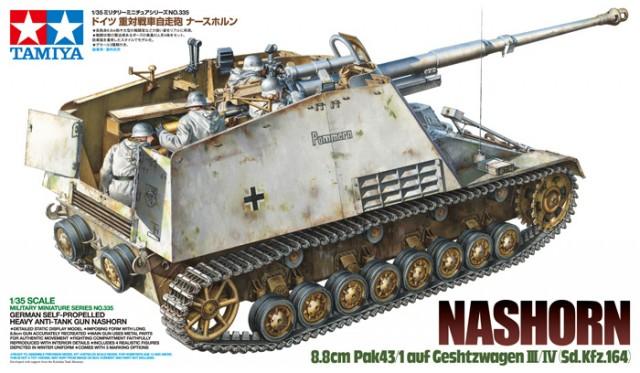
|
Nashorn 8.8cm Pak43/1 auf Geshtzwagen III/IV (Sd.Kfz.164)Published:
With the invasion of Russia in 1941 by German forces, and their encounter with hitherto unknown powerful tanks such as the T-34/76 and KV-1, the German forces clearly required a mobile anti tank weapon to help counter these Soviet tanks. In February 1942 the arms firm of Alkett came up with a tank destroyer design (Panzerjager) that utilized components of the Panzer III and Panzer IV tank, and mounting an 8.8cm long barreled anti tank gun, the Pak 43/1. This was basically the same gun that was later to be mounted in the Tiger II tank. The prototype weapon was presented for inspection by Adolf Hitler in October 1942, and entered production at the start of 1943. It was initially known as the Hornisse (Hornet) but the name was changed to Nashorn (Rhinoceros) apparently at the… more |
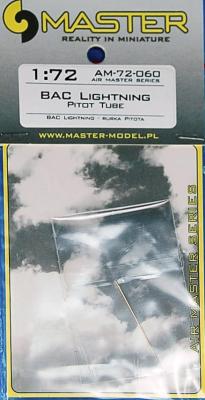
|
BAC/English Electric Lightning Pitot TubePublished:
The firm Master Model, from Poland, produces a very wide range of exquisite turned-brass accessories for the aircraft, ship, and armor modeler. Their products include Pitot tubes, machine gun and cannon barrels, shells, and spent shell casings in almost every scale you can think of from 1/700 scale for ship models to 1/24 scale for aircraft models. The pitot tube under review today came in a simple card-backed package with the part contained in a plastic sleeve. It is listed for “all kits” of the BAC/EE Lightning in 1/72 scale. This includes the most recently released gem from Airfix, the recent Trumpeter releases, and kits dating all the way back to the Frog issues of this aircraft. I compared the Master Model pitot tube to the stock version contained within the… more |
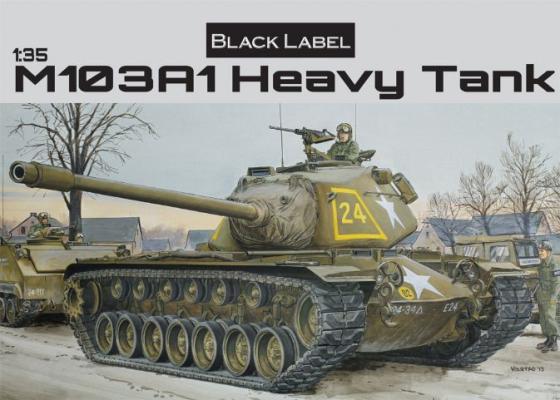
|
M103A1 Heavy TankPublished:
The USA managed to muddle through World War 2 utilizing the M4 Sherman Medium Tank as the mainstay of its armored forces. However, as the Germans introduced better armored tanks with ever more lethal main guns, the M4 Sherman became increasingly vulnerable. It wasn’t until 1945 that the US finally introduced into front line service its first Heavy Tank, the M26 Pershing with its more potent 90mm main gun and better armor protection. With the Germans and Japanese defeated in WW2, it soon became apparent to the US that its former ally, the Soviet Union, was becoming its main potential adversary in the post war era. And the Soviets were fielding some very impressive heavy tanks of their own, such as the IS-3 and the T-10, and that the US would need to beef up its own forces with suitable… more |
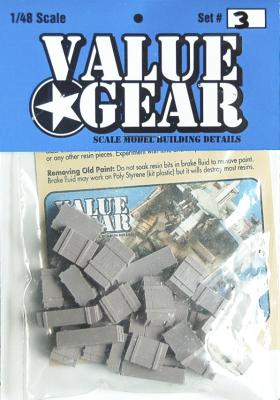
|
Universal/Generic Stowage SetsPublished:
This review covers the following Value Gear Universal/Generic Stowage Sets:
Judging by the blurb on their web site, Value Gear is run by an American expat who moved to Ireland for a quieter, less-stressed life. He is an “at home Dad” by day, and a resin accessory producer by night, which doesn’t sound like a half-bad way to live! Value Gear’s products are generic, in that they are appropriate for any army, since they are a series of rolled up tarps, tents, and other canvas items, along with generic wooden crates. Thus they are equally at home on a… more |
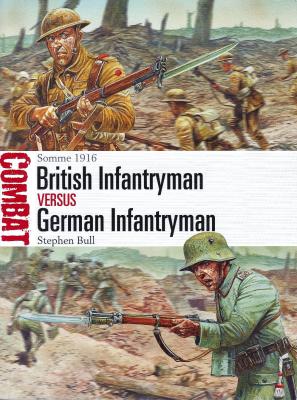
|
German Infantryman vs Russian InfantrymanPublished:
August 2014 marks the 100th anniversary of the start of mankind’s first cataclysmic world war, the disaster that shaped the world as we know it today. According to a recent article I read, there have been over 25,000 books and scholarly articles written on the “war to end all wars.” Here we have a review of one more. A number of my relatives fought in this monumental bloodletting, including one who was on the Western Front as an artilleryman in a New Zealand unit for over three years, while another fought above as a pilot (and ace) in the Royal Flying Corps. As a young budding historian in the 1970s, I discussed the family history of these men and others, hearing about the “great” battles of the war. One in particular, the Somme, cropped up again and again in my… more |
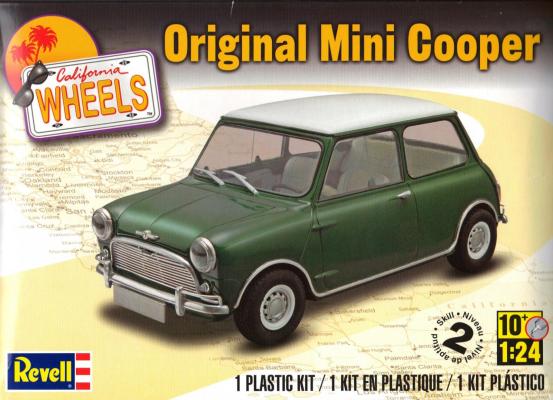
|
Original Mini Cooper (California Wheels series)Published:
The “original” Mini was produced from 1959 to 2000 by the British Motor Corporation and its successors, British Leyland and the Rover Group, designed by Alec Issigonis and marketed under the Austin and Morris badges. The Mini Cooper was the “Sports” option that was developed by legendary race car maker John Cooper. The key here is that not all Minis are Coopers although most Americans know the Mini line of cars as “Mini Coopers”. This car kit has its origins in Europe, being first introduced by Revell Germany before being reboxed for the US market by Revell here in the States. The kit consists of just under 130 parts, molded for the most part in white plastic or white plastic coated with “Chrome” plating. There is also a clear parts sprue for the windows, headlight lenses and… more |
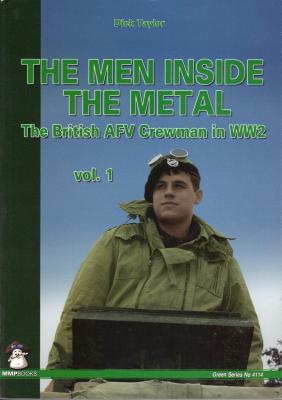
|
The Men Inside The Metal: The British AFV Crewman in WW2, Vol. 1Published:
Thousands of books have been published over the years covering the various armored fighting vehicles utilized by British and Commonwealth forces in the Second World War, and many of them are sitting on my bookshelves, and I am sure yours. There are also numerous books on the various battles that took place involving these vehicles and the generals, officers, and enlisted men who took part. But it is rare that you get a book as detailed as this one on the individual crewmen who accompanied these machines into battle. This book does not cover the training these men received prior to going into battle, nor does it cover their backgrounds prior to joining the armed forces. Nor does it cover the makeup of the units involved in the fighting. What it does cover, and covers it very… more |
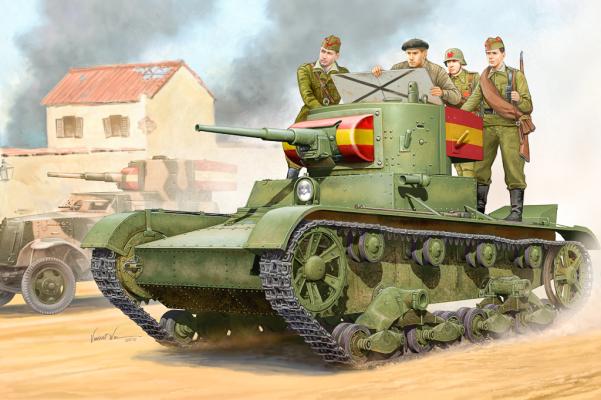
|
Soviet T-26 Light Infantry Tank Mod. 1935Published:
When I first saw this model kit as being available to review for IPMS/USA, I must admit I was ignorant of its importance in the history of tank development and warfare. Developed from the British Vickers 6 Ton tank of the late 1920s, the T-26 series of tanks was one of the most important of the 1930s, and together with the Soviet BT series, provided the backbone of Soviet tank forces in the interwar period. The T-26 was the most numerous tank of the Spanish Civil War, provided a large component of Soviet tank forces during the Finnish/Soviet conflict of 1939-40, and despite falling behind in design compared to improvements in anti tank gun development, was the most numerous tank in the Soviet arsenal when Germany launched Operation Barbarossa in June 1941. What’s in the Box… more |
